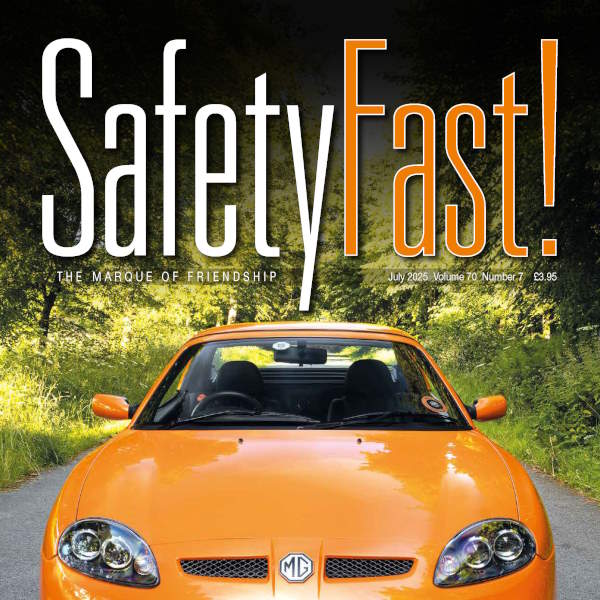MG Maestro: An Appreciation after 25 Years – Part 1
Reproduction in whole or in part of any article published on this website is prohibited without written permission of The MG Car Club.
By Roger Martin
Twenty-five years ago in March 1983, the MG Maestro was launched along with the other members of the LM10 model family. This followed the 1982 launch of the MG Metro, the unexpected success of which resulted in the MG version being somewhat hastily added to the Maestro model range.
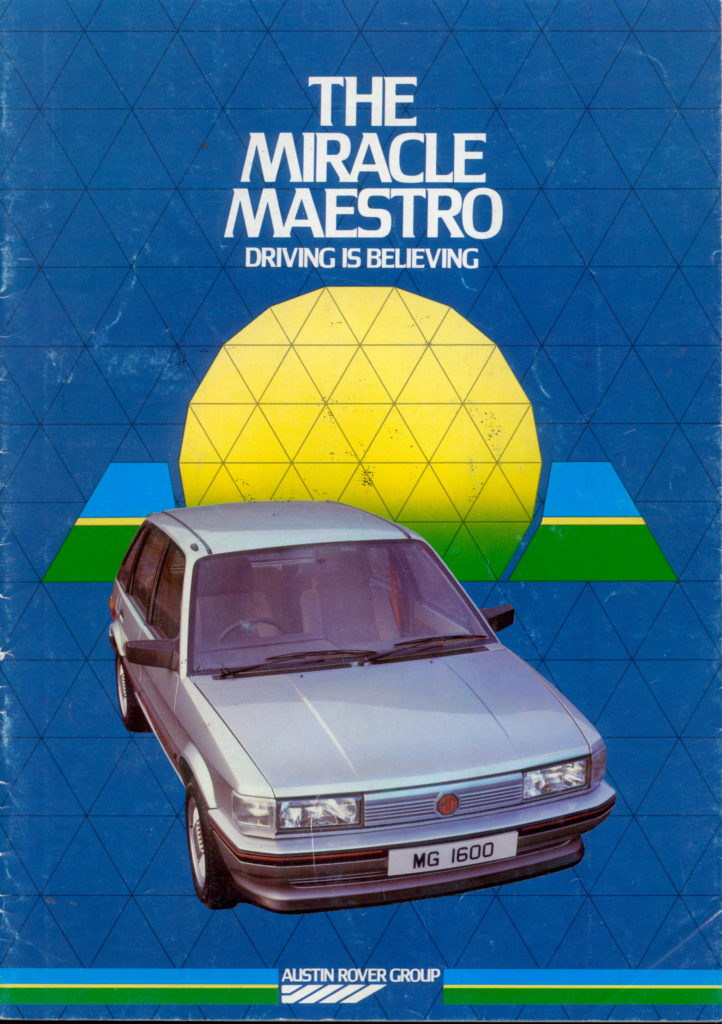
Unfortunately, like the MGA Twin Cam and MGC before, this resulted in the MG Maestro appearing in dealer showrooms in somewhat under-developed form. However, unlike these predecessors, at least the MG Maestro benefited from subsequent development so later variants were progressively improved but, as before, the damage to its reputation had already been done.
As a result, less than 44,000 MG Maestros were manufactured, as compared to more than 120,000 MG Metros. As an aside, this relativity was mirrored at the range level whereby during 1985 Metros overall repeated the British car sales chart-topping performance of the BMC ADO16 1100/1300 cars two decades earlier, whereas the Maestros barely made it into the top ten. This at a time when the 23-year old MGB was still in the top ten most sought after used cars.
The Maestro ‘making-good’ process resulted in the initial R-Series 1600-engined model being replaced by the S-Series 1600-engined version after just a year, which in turn was replaced by the 2-litre Efi model after only a further six months. Later changes were largely cosmetic plus a name change to 2.0i, with the notable exception of the legendary Tickford finished MG Turbo ‘road rocket’ (no ‘Maestro’ in its official designation).
For the record, the total numbers of these Cowley manufactured MGs are as follows:
R-Series 1600 – 12,398
S-Series 1600 – 2,762
EFi/2.0i – 27,800
Turbo – 505*
(* The official Turbo figure was 501 but when Roger Parker examined the VIN records at the Tickford works he discovered that 505 cars were in fact produced)
All of these models were in production at a time of my life when my wife Fran and I had three growing sons who had ceased to fit into her MGB GT. So in 1984 she took over the sensible family cars and I was able to drive S-Series 1600, EFi and Turbo MG Maestros as company cars for the following ten years.
My 1600 experience
I might not have considered the MG Maestro at all were it nor for my mother purchasing one of the first MG Metros. I had been pleasantly surprised by its performance, seemingly as good as our MGB GT and with better handling, but the back was a little too small for our three boys.
Therefore, the prospect of the larger, 5-door MG Maestro suddenly seemed to make a lot of sense so I took a trip to my local Austin Rover dealer. Unlike the press, I didn’t dislike the look of the car and the dealer responded to my concerns about the reported poor starting and over-heating behaviour by lending me his personal car for the weekend. In very few miles I was convinced I wanted one.
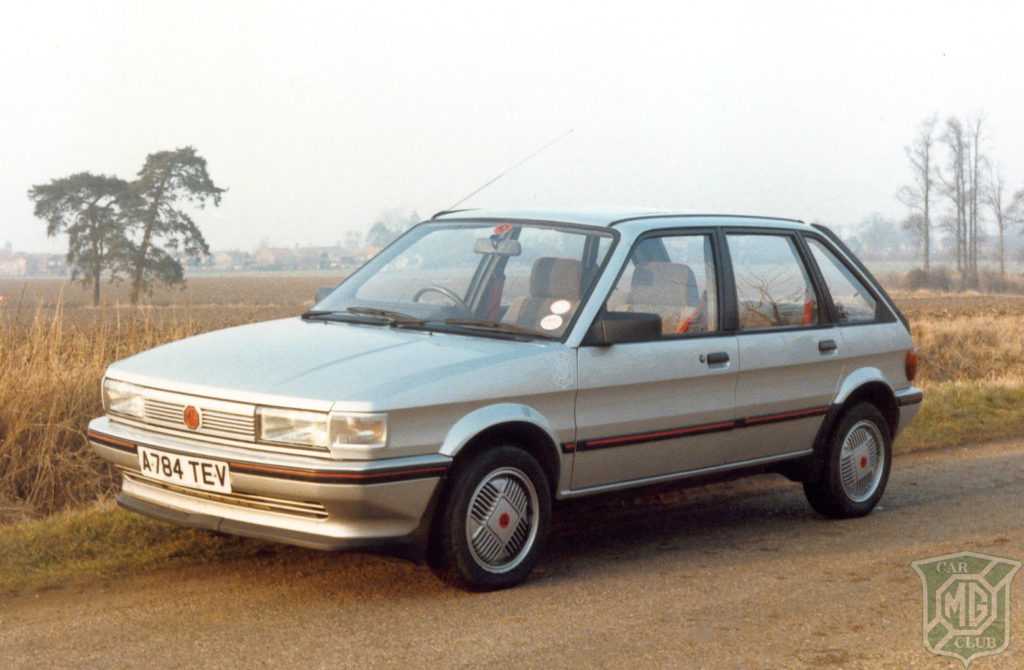
I ordered a silver model as I liked the colour coded effect with respect to the grille, which was silver on all models regardless of colour, but I had to wait four months for delivery. I was told this was because it was a ‘special build’; me having specified a sun-roof together with clear (not-tinted) glass and with manual (not central) door-locking as in the ‘standard’ high specification builds. I think it was no coincidence that the early publicity materials always showed the MG in silver.
I impatiently endured the wait pondering the question of differentiation, always a problem with badge-engineered MGs. I spent some time designing potential side stripes but in the event I only added DIY MG insignia to the wheel centres. My Austin Rover dealer told me that other customers had seen them and requested the option, assuming it to be dealer fit! Interestingly, having discussed differentiation, he later advised that Austin Rover were offering side-stripes at c.£50 a time.
First drive in the car had frightening ‘graunching’ noises coming from the suspension. These turned out to be wooden blocks inserted by the factory to prevent the spoiler skirt being damaged on the delivery transporter, but nobody had warned the dealer. I was also not enamoured with the car bearing a road tax disc stating it to be an Austin.
Running in – remember that – was tedious, being at a maximum of 3000 rpm with an engine beginning to come on song at 2800 rpm. However, once run in the car became quite enjoyable and hinted at the ‘boy racer’ stimulation that my later cars would fulfil. I say hinted as the acceleration was only ‘reasonable’, even contemporary non-GTI Golfs could out-drag the Maestro at most speeds, but its road holding was pretty good. Nonetheless, I could easily lift a front wheel accelerating out of certain bends where the camber was against me. My notes record that I found the ride on undulating roads ‘rather floaty’.
The steering, which was not power-assisted, was direct but heavy at low speed despite being quite low geared, no doubt due to the engine sitting over the fat Pirelli P8 tyres. My notes also say that the VW sourced gearbox was ‘squelchy’, presumably compared to the crisp gear-change of our older MGs. I also found the headlamp power output poor compared to our Rover SD1 at the time, Austin Rover did offer a twin spot-lamp grille option but I felt it looked ugly so lived the standard candle power that in truth was no worse than our MGB GT.
Unlike the universally poor reviews, I rather liked the solid state trip computer/tachometer and the voice synthesis warnings voiced by New Zealander Nicolette McKenzie. I made a point of not completely releasing the hand-brake whenever I took a first-time passenger to demonstrate the car’s high-tech. abilities! This and the “lights on” warning were probably the most useful and, perhaps as a result of reviewer dislike of the test cars, my car’s vocabulary did not have a seat-belt warning.
I also liked the continuous and instantaneous fuel consumption readouts now quite common on modern cars. The Maestro also anticipated some modern-day downsides, like the digital clock being unreadable in direct sunlight. However, for me, the signature feature of the MG Maestro interior was the red seat belts – perhaps they were analogous to the ubiquitous red braces in the City of London in the 1980s.
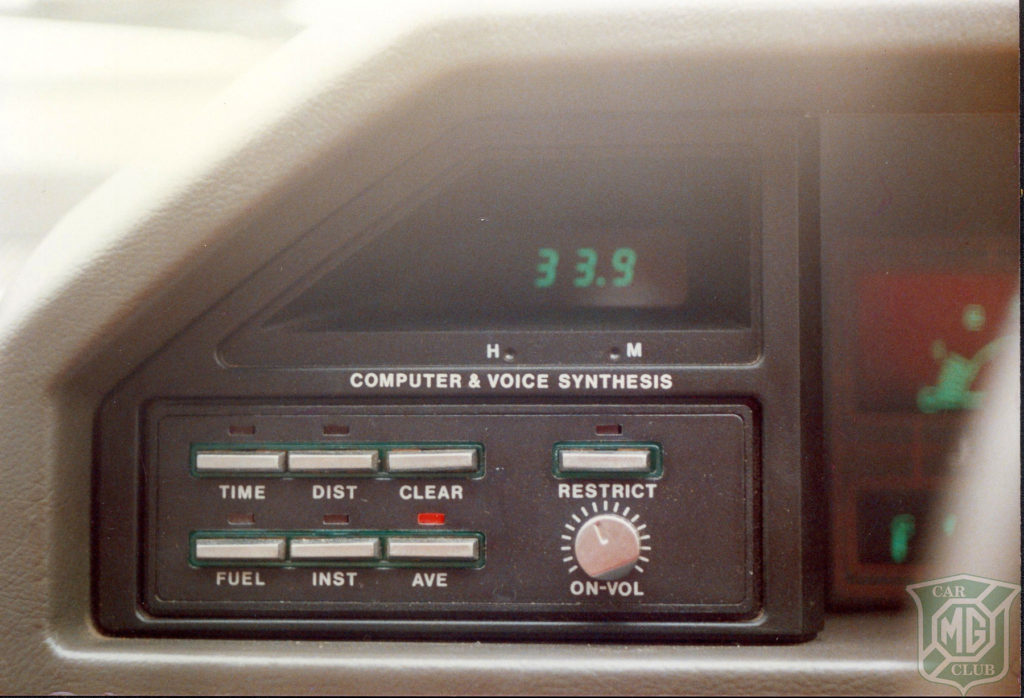
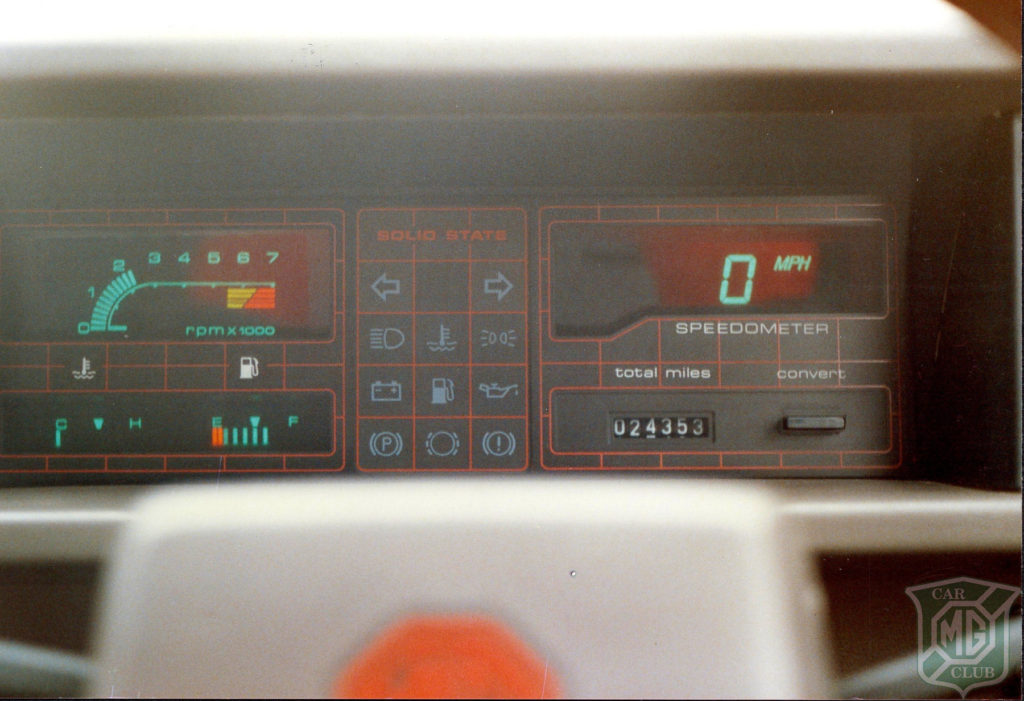
My 1600 never suffered over-heating, either belting up and down motorways or sitting in traffic jams. Clearly the little cooling fan in the offside front wing of the S-Series solved this R-Series problem. Starting could be tricky, however. Whether hot or cold there was a black art to churning the starter and/or priming the Weber carburettor and/or using the choke, as conditions dictated. As the S-Series was reported as being a great improvement over R-Series – the latter must have been bad!
The engine went off song some time before the first service after a year and 8,000 miles, then did it again within six months afterwards. My Austin Rover dealer responded “they all do that every 5-8000 miles”! At least the 2nd tax disc specified MG.
Reports of poor build quality were entirely true. Early on, the interior mirror glued on windscreen fell off, the sun-roof handle sheared off at the base (the replacement was beefed up but didn’t match interior colour) and the driver’s door window collapsed into the door. Also, the window glass seals permitted rain to flow through the doors, causing condensation, so I had to de-ice the inside and the outside of the windows on freezing mornings.
I had engine malfunctions due to firstly a cracked distributor cap and then a faulty rotor arm, an exhaust bracket detached itself from the body and the spring in the fuel cap rusted, which allowed fuel to spill out of the tank. Towards the end of my three years and 24,000 miles, engine fan ducting screws had gone missing, the air cleaner hose had split and the clutch was slipping. Also, the fuel sender was sticking – which was a real worry to poor Nicolette and her ‘fuel used’ button had also fallen off the trip-computer. Oh, and the paint was starting to fall off the rusting doors and I was plagued with slow punctures due to the lacquer separating from the alloy wheel rims.
So, to sum up my S-Series Maestro had adequate (rather than impressive) performance, was temperamental to start and was pretty poorly put together. However, it was enjoyable to drive, did the job, i.e. got me to work and the boys to their recreations, transported tumble driers, building supplies and classic MG spares AND it was an MG. Also in its favour, I remember it being confidence inspiring in snow so I enjoyed playing with it on a snow-bound local airfield. I was just glad that it was a company car as I could not in all honesty recommend it as a ‘wise buy’.
My DVLA search shows that the last ‘date of liability’ for the car was June 1994 so it managed to survive another seven years, perhaps helped by it being retained by the Austin Rover dealer for staff use when I traded it in. My only Maestro 1600 souvenir is a yellow Corgi model that I purchased at that time.
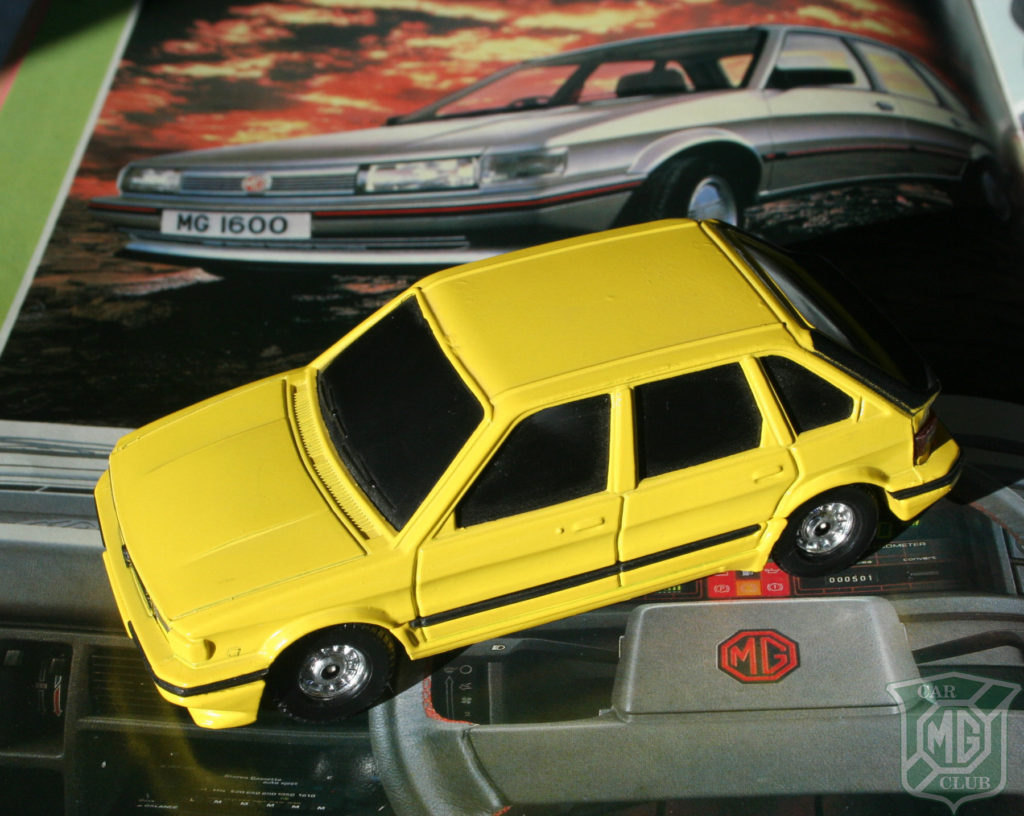
My EFi experience
Whilst my time with the 1600 Maestro had its tribulations, its successor, which was launched not long after I took delivery of the 1600, received much better reviews. So as I liked the idea of an MG Maestro with all the good points of the1600 but without all the bad points, I prevailed upon my Austin Rover dealer to lend me his personal EFi for a couple of days. Once again, he wasn’t stupid and I was easily seduced. It even had MG wheel centres! I ordered another silver one and put a racy MG back-flash on the rear hatch window to increase differentiation.
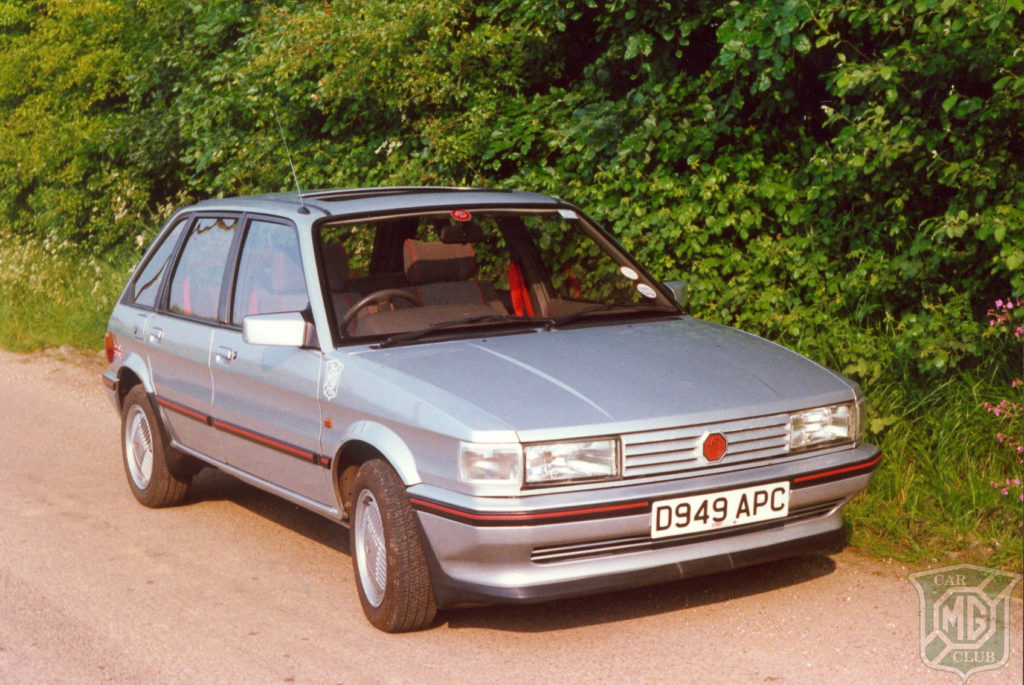
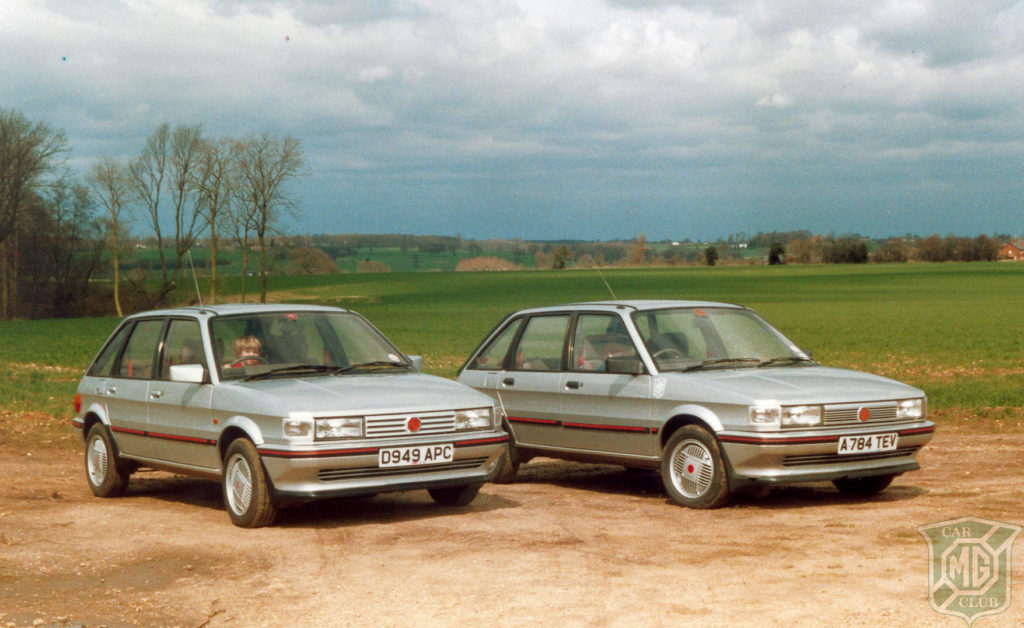
I cannot deny that it was the better performance that hooked me. The EFi’s acceleration seemed a particular improvement over the 1600, feeling much greater than the on-paper figures of an additional 12 bhp would suggest. I guess this was really due to the massive increase in torque up from 100 lb ft to 134 lb ft. Whatever it was, the car flew, being very competitive (when one up) against the opposition.
The suspension seemed better sorted, by anti-roll bars, I think, so the handling was nothing short of excellent. One could have serious fun in an EF1 and I often did. I even caught myself thinking that a sports car built on the Maestro floor-pan and EFi mechanicals would be a great machine. Come to think of it, wasn’t the Metro 6R4 based on the Maestro floor-pan?
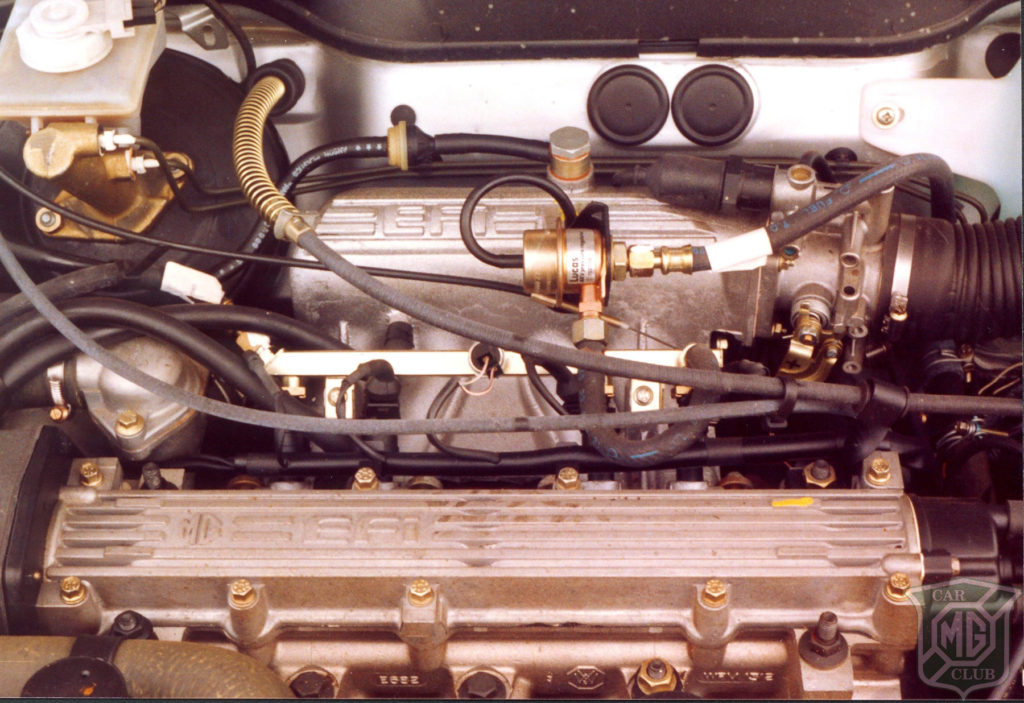
In addition, the fuel-injected and engine-managed EFi started on the button and had perfect engine tick-over, when hot or cold. I found the Honda gearbox much smoother than the allegedly stronger VW one in the 1600, and the gear positions i.e. reverse to right and back (left and forward on the 1600) more natural. The Efi had power steering, which I felt lost ‘feel’ but was much lighter and definitely appreciated by Fran.
I remember the car introduced the so-called ‘dim-dip’ feature, whereby the car could not be driven (or even the engine run) with just sidelights on, the dipped headlights being switched on automatically. The car still had the red seat-belts that I loved but the upholstery was a more muted herring bone pattern which, together with the then standard tinted glass, made the cabin seem more gloomy compared to its bright an airy 1600 predecessor.
‘What Car’ magazine stated that ‘few will miss the solid-state dash’. Well I was one of the few who did and regretted its deletion from the specification. I also preferred both the 1600’s traditionally shaped gear knob to the EFi’s ‘ergonomic’ one as well as the 1600’s steering wheel. Also, the EFi had a shallow storage recess above the dash out of which, irritatingly, rolled almost everything I put in it when the car was under acceleration. However, the glove-box was more capacious and the rear shelf straps didn’t fall out the shelf when they were unclipped from the hatch, so it was no less enjoyable to live with.
But what, I hear you say, about the quality? Well, the window seals had not been improved and on delivery there was a screw missing from the rear shelf strap bracket, hardly big issues but not what one would find in a German or Japanese car. Then, over the three years I had the car, my notes say that the wiper motor became noisy, the power assisted steering pulley came loose and the aerial started to rattle in the wind. The rear hatch release button kept getting stuck in, dirt I guess, and the rear number plate illumination lamps kept popping out of the bumper.
I also had a couple of ‘funnies’ that seemed to cure themselves. The oil warning lamp came on once at 750 miles after a fast run, but the oil showed high on the dip-stick. Having stopped and restarted the engine, it didn’t do it again. On another occasion I feared a head gasket failure when the engine started misfiring and pumping steam from the exhaust, but as I attempted to limp to a place to park up it cleared. Maybe it was contaminated fuel.
After two years, the petrol tank developed a leak, which took about three weeks to fix due to unavailability of a replacement tank. I told the garage that I could get one for a thirty year old MGA in 48 hours so it was pretty poor that one for a current MG took so long. The whole exhaust needing replacing after 23000 miles.
So, some niggling problems that show quality was still not brilliant but, all-in-all, I enjoyed my EFi years, I was relaxed about Fran using the car and I did recommend it to others (even if some of them did get MG Montegos instead).
My DVLA search on this car shows a last ‘date of liability’ of December 2004, so it managed at least a sixteen year life that may reflect the relative improvement of the EFi over the S-Series 1600.
In Part 2 Roger recounts his experiences with the MG Turbo and takes a final look back over the Maestros he has owned.

 MG Car Club
MG Car Club